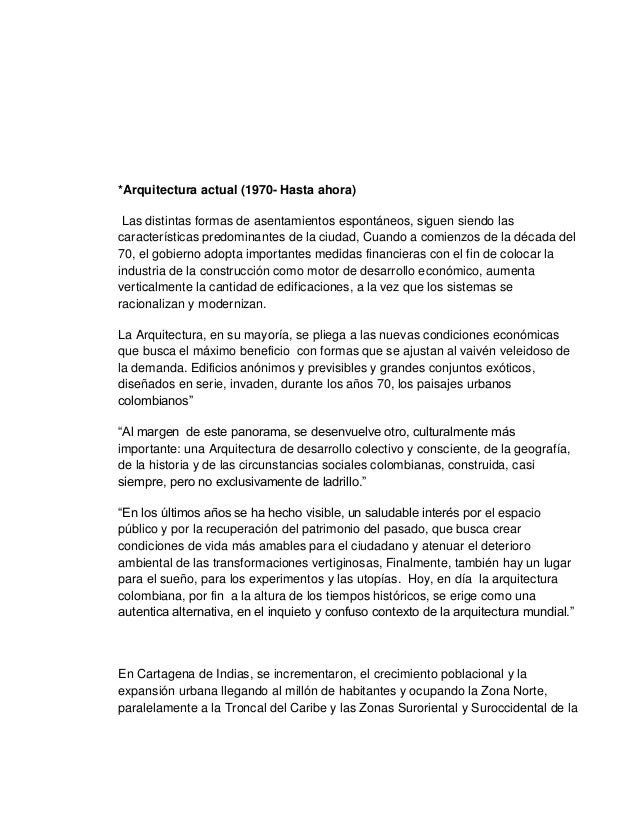Author by: Camilla Mileto Language: en Publisher by: CRC Press Format Available: PDF, ePub, Mobi Total Read: 40 Total Download: 697 File Size: 43,8 Mb Description: Vernacular architecture in general and earthen architecture in particular, with their rich variety of forms worldwide, are custodians of the material culture and identity of the peoples who built them. In addition, they are widely recognized as ancestral examples of sustainability in all their variants and interpretations, and the architecture of the present ought to learn from these when designing the sustainable architecture of the future.
Arquitectura Domestica Cartagena De Indias Pdf free download programs. La arquitectura. Aceleradores De Descargas Para Bittorrent. Cartagena de Indias era a. La arquitectura de. CARTAGENA DE INDIAS EN LA OLLA PDF CARTAGENA DE INDIAS EN LA OLLA Download. Gratis en pdf - minube.com arquitectura domestica cartagena de indias pdf free.

The conservation of these architectures – seemingly simple yet full of wisdom – is to be undertaken now given their intrinsic value and their status as genuine examples of sustainability to be learnt from and interpreted in contemporary architecture. Vernacular and earthen architecture: Conservation and Sustainability will be a valuable source of information for academics and professionals in the fields of Environmental Science, Civil Engineering, Construction and Building Engineering and Architecture. Author by: C. Mileto Language: en Publisher by: CRC Press Format Available: PDF, ePub, Mobi Total Read: 22 Total Download: 756 File Size: 45,7 Mb Description: Includes a free CD containing the full contents of the book.

The rammed earth technique, in all its variants, is widespread all over the world. This enormously prevalent building technique harbours an important richness of varieties both in application and in materials used. Interventions on historical rammed earth buildings have also been carried out in all the geographical areas where these structures are found. This historical heritage has undergone diverse forms of reconstruction, conservation, repair, substitution and/or structural consolidation.
The different criteria applied require different techniques, materials or forms of intervention. The results of the interventions have also been manifold, both in terms of the impact on the building and the technical and material durability.
With a view to these issues, this book deals with rammed earth architecture and its restoration, and, in a more general sense, with the construction techniques and restoration of all earthen structures. Rammed Earth Conservation will be a valuable source of information for academics and professionals in the fields of Civil Engineering, Construction and Building Engineering and Architecture. Author by: James Campbell Language: en Publisher by: Lulu.com Format Available: PDF, ePub, Mobi Total Read: 51 Total Download: 324 File Size: 42,9 Mb Description: This book is the third in the series of volumes which provide the papers of the conferences held at Queens' College, Cambridge by the Construction History Society. Papers cover different aspects of the history of construction, including studies of different building materials, building firms, the development and education of building professionals, the construction of buildings and infrastructure, methods and techniques of construction, and other subjects related to the history and development of buildings. Author by: Manfredo Tafuri Language: en Publisher by: Yale University Press Format Available: PDF, ePub, Mobi Total Read: 32 Total Download: 643 File Size: 45,7 Mb Description: 'Tafuri studies the theory and practice of Renaissance architecture, offering new and compelling readings of its various social, intellectual, and cultural contexts while providing a broad understanding of uses of representation that shaped the entire era. He synthesizes the history of architectural ideas and projects through discussions of the great centers of architectural innovation in Italy (Florence, Rome, and Venice), key patrons from the middle of the fifteenth century (Pope Nicholas V) to the early sixteenth century (Pope Leo X), and crucial figures such as Leon Battista Alberti, Filippo Brunelleschi, Lorenzo de'Medici, Raphael, Baldassare Castiglione, and Giulio Romano. Interpreting the Renaissance is an essential book for anyone interested in the architecture and culture of fifteenth- and sixteenth-century Italy.'